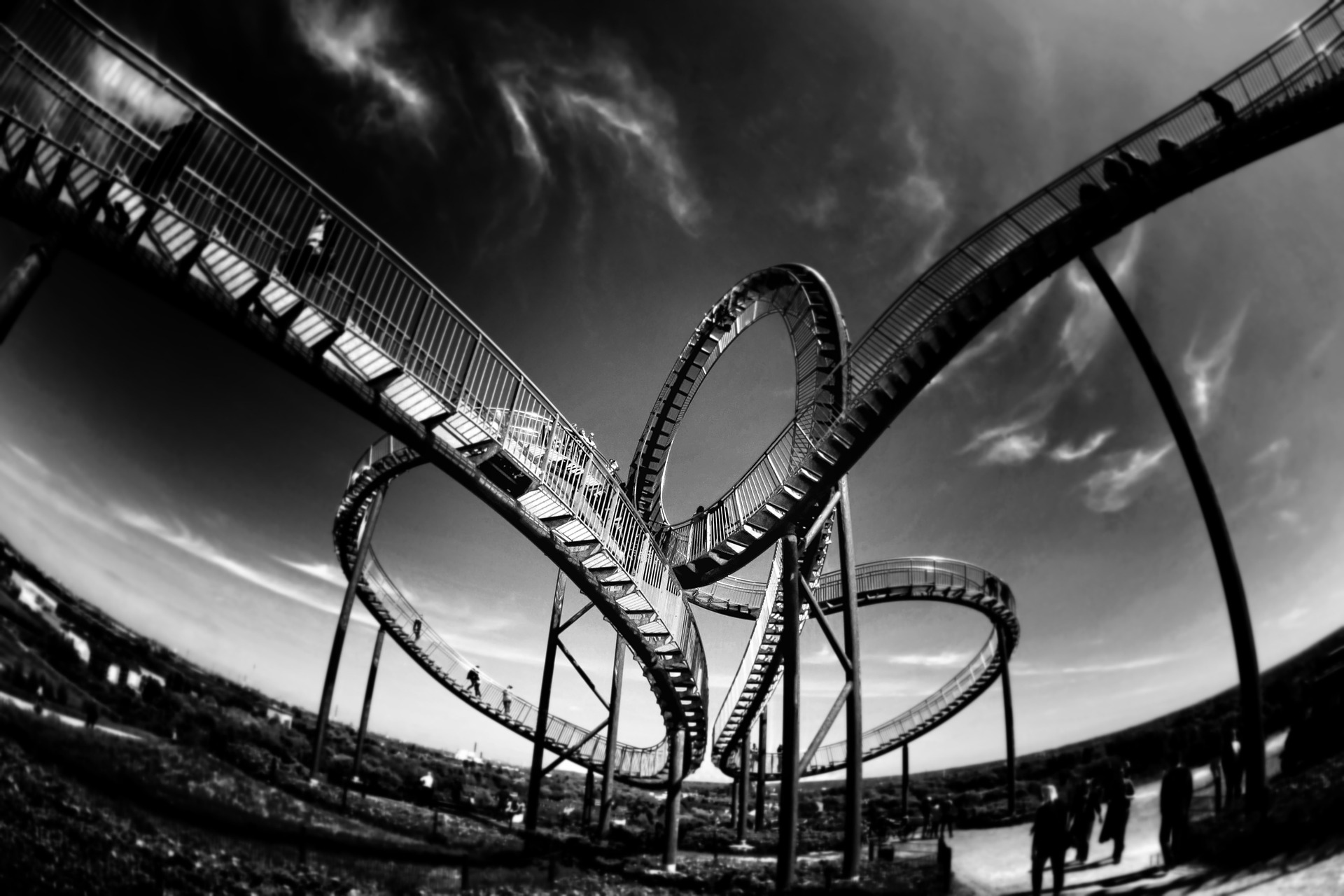Have you ever been told that you’re “too much?”
That you think too much. That you feel too intensely. That you have too much energy. Maybe you’re just too darn too.
If so, or if you know someone like this, then Third Factor Issues 2 and 3 were written just for you.
When you’re significantly more intense than average, it can feel like something is wrong with you. Perhaps you’ve gone to see a therapist, who might have told you that you’re anxious. Maybe—especially if you have too much physical energy to sit at a school or work desk for hours at a time—you wonder if you have ADHD. Maybe your therapist told you that you’re actually really high functioning, but he’s happy to help you work through all those thoughts and feelings, because you do seem to have quite a lot of them. Or maybe you’re about to break down.
Overexcitability in the Theory of Positive Disintegration
Psychiatrist and psychologist Kazimierz Dabrowski (1902-1980) studied this experience of “too muchness” as a central component of his theory of positive disintegration (TPD). A variety of terms have been used to translate the concept from Dabrowski’s original Polish, including superstimulability, heightened excitability, intensity, spiritedness, or even aliveness, though it is known most commonly as overexcitability, or OE for short. Some people are put off by the prefix “over” because it seems to suggest an intensity that is out of bounds, but this isn’t what Dabrowski intended. The term simply refers to a heightened response and lower threshold to stimuli (Dabrowski, 1972), and Dabrowski was clear that this heightened response often fuels a very valuable type of growth.
Overexcitability, moreover, is not merely mental, but physiological—an all-encompassing property of the central nervous system. Consider this fun fact: if an average person closes her eyes and someone presses on her eyelids, her heart rate will fall ten percent. If someone does this to a highly excitable person, hers will drop fifteen to twenty percent, according to this presentation by Bill Tillier at the 2016 Dabrowski Congress (jump to about 16:30).
Dabrowski described five distinct manifestations of overexcitability: intellectual, imaginational, psychomotor, sensual, and emotional. A person can have any one of them, or a few at different levels. Some lucky people have all five of them at full strengths, though even they tend to have a dominant form of OE that colors their overall experience. These people have many different channels through which they’re absorbing, processing, and reacting to an unusually high amount of external stimuli. Sometimes those channels amplify each other; sometimes they clash with each other.

The bottom line is that if you’re overexcitable, life is intense. And this, as you might imagine, poses challenges. The overexcitable life is richer and deeper than average—and can therefore be overwhelming. It takes practice and effort to live this life well.
Therefore, according to TPD, overexcitability is the wellspring of disintegration. And though disintegration can be positive, it can also be negative. OE can lead to a misdiagnosis of mental illness; it can also genuinely give rise to it. This is something that is up to each overexcitable individual to work out on his or her own, or perhaps with a good therapist who understands intense people. We discussed this in our last issue when we explored the history of overexcitability and the research behind it, and it’s worth reiterating: overexcitability per se is not a pathology, but it is a challenge. That’s precisely why it’s the fuel of positive disintegration.
Who Are the Overexcitable?
Compounding this challenge is the fact that, as social creatures, we tend to compare ourselves to others. Since overexcitability is by definition removed from the norm of human experience, overexcitable people aren’t likely to learn how best to harness their intensity simply by going with the flow. Many therefore develop their own compass, often through a series of small disintegrations. When possible, however, we can benefit from comparing notes with others who are similarly wired. That’s why, in our next two issues (to be published in late August and late September, 2018), we’ll speak to people who have put the framework of overexcitability and TPD into action in their own lives and professional practices. We hope these stories provide good food for excitable thought for those of you working through all that heavy, sticky perception that your excitable physiology has bequeathed to you.
Since overexcitability is by definition removed from the norm of human experience, overexcitable people aren’t likely to learn how best to harness their intensity simply by going with the flow.
There are some special populations that are worth mentioning in any discussion of overexcitability. One of these is that group generally described as the intellectually gifted. Overexcitability is, after all, the same intensity included in the definition of asynchronous development, which the National Association for Gifted Children notes is common in the gifted. At the same time, not all gifted people are overexcitable, and not everyone with OE necessarily would benefit from a gifted program. If we had a Venn diagram, “gifted” and “overexcitable” would be two separate circles with significant overlap. We also think there’s overexcitability to be found among those who don’t fit what “giftedness” is generally intended to describe, and indeed, gives rise to its own sort of gifts.
Another special population—which gives us another overlapping Venn circle—is that of the highly sensitive, or HSPs. Emotional overexcitability in particular is surely related to what Dr. Elaine Aron is describing in The Highly Sensitive Person—a book that has moved sensitive men and women to tears by showing them that they are not, in fact, defective. An exploration of how Aron’s and Dabrowski’s conceptions are alike and different is beyond the scope of this article, but there’s definite food for thought here that Third Factor will explore in the future.
Also worth noting are the particularly creative people among us. Creative expression is one common outlet for that mental detritus created by our waves of intensity. It’s therefore no surprise that the pages of many beloved books are populated by a higher proportion of overexcitable characters than the general population. Take for example Anne of Green Gables: if you’ve read that classic, you’ll recall how Marilla had no tolerance for her overexcitability!

There are also people who identify with none of the above groups who still experience overexcitability. Those people may benefit from understanding it more than anyone else, because they may never have found a group where it’s relatively common and accepted.
Why Overexcitability Matters Today
As we noted earlier, some of you overexcitable types will have struggled with mental health issues, or even crises. This is to be expected when the volume on your life is cranked up higher than it is for others. Here we return to the role of OE in positive disintegration—and reintegration. According to TPD, overexcitabilities may give rise to dynamisms—i.e., developmental forces that restructure our inner selves and put us on the path to becoming the people we wish to be. That’s why we’ve included in Issue 2 a basic guide to TPD’s levels and dynamisms. The process of disintegration and reintegration is at the heart of why overexcitable people have some hope of becoming catalysts for positive social change, even as they often struggle with being too different to become leaders in the traditional sense. This topic is far too complex to address in this single issue, though it is the purpose behind the entirety of Third Factor. We hope you’ll stick with us for the long term to explore the issue further.
It might be said that this is the age of overexcitability. While people wired this way are no more common than before, social disintegration may well be pushing people with slightly lower thresholds of excitability to experience the intensities to which our particular type of flesh is heir; those who are the most excitable, meanwhile, are experiencing full-on disintegrations. If we don’t learn to harness this excitability constructively—individually and collectively—then our society is in big trouble.
It might be said that this is the age of overexcitability. And if we don’t learn to harness this excitability constructively—individually and collectively—then our society is in big trouble.
So we’re very grateful to everyone who helped put together these two issues, and all those who are ready to do the work of helping us reintegrate—the work of repairing the very foundations of our selves, and therefore our society. We hope you enjoy these issues, and that they help you get a little closer to your own personality ideal. If you have thoughts, we invite you to join in the conversation at the Third Factor Community Forum, or even pitch us with your own idea for a story.
References
Dabrowski, K. (1972). Psychoneurosis is not an illness. London, England: Gryf.





